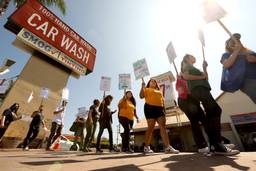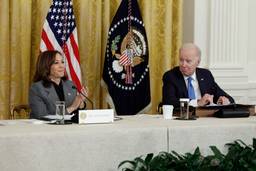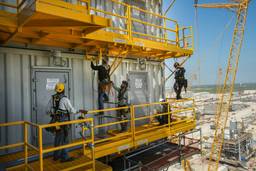
Richard Freeman wishes landmark New Deal-era legislation an unhappy 75th birthday
The National Labor Relations Act (NLRA), the country’s foremost labor statute governing private sector workplace issues, is out of date, says Harvard labor economist Richard B. Freeman.
Freeman, who also directs the private nonprofit National Bureau of Economic Research, presented a working paper in late October at a conference held by the National Labor Relations Board (NLRB) and George Washington University law school. The symposium, first covered by The New York Times, was to commemorate the 75th anniversary of the landmark labor act.
In examining the legacy of its impact, Freeman argues the NLRA system is not adequately addressing the needs of 21st-century labor issues. While the legislation intended to create a proper channel for employees to unionize, many labor organizers have bucked the law by working outside of the NLRA’s scope of influence.
“It is perhaps harsh and impolitic at the NLRA’s 75th birthday to declare that in 2010 the law no longer fits American economic reality and has become an anachronism irrelevant for most workers and firms. But that is the case,” Freeman writes.
When Congress enacted the NLRA in 1935, the intent was to provide safeguards for private sector employees and employers in hopes of fostering a healthy relationship that would otherwise harm the U.S. economy. It provided a space where private-sector workers were able to decide whether to unionize, free from employer coercion, and encourage collective bargaining. But Freeman says the provisions have not done enough to regulate anti-union activity, leading to a decline in private-sector union membership.
NLRB elections have become launch pads for anti-union organizing drives by employers, who often times use illegal tactics, he says. He adds that supervisors often times pressure workers to reject unionization. This failure to enforce unfair labor practice provisions are a key reason why private sector unionization has fallen to 7 percent, a number comparable to before the NLRA was enacted.
Employers will take great risks to stifle union activity mostly because it is in their financial interests to do so. Since unions will typically raise wages and benefits, shifting profits to workers, employers feel that this will put them at a disadvantage. Consequently, they’re going to do whatever it takes to keep unions from forming, says Freeman.
The NLRA was designed to resolve labor conflicts experienced by factory workers during the Depression. The Act was effective for the first 30 years. Workers earned more rights in the workplace as labor moved away from an employer dominated system. Strikes declined. But the policies are outdated to accommodate today’s workplace issues, argues Freeman. As a result, many organizers rely on other campaigns outside of the Act to unionize workers. In fact, less than 20 percent of organizing drives during the late 1980s and 1990s relied on the NLRA. The other 80 percent occurred outside of the process.
The weak enforcement regulations and antiquated framework has made it difficult for employees to form unions. Freeman offers four recommendations to improve the effectiveness of the NLRA:
- In order to prevent illegal activities, he suggests strengthening the penalties for any violations committed by companies or unions. The fines should be in proportion with the severity of the offense.
- Supervisors who are put on the “front line” by companies to oppose unions should have legal protections allowing neutrality on whether to unionize. They should be able to do so without any retribution.
- Elections should be conducted on a rolling basis at a neutral site. Workers will feel less intimidated by voting outside of the workplace.
- Employers should be allowed to form employee work councils addressing well-being issues. The Times notes that this is admonished by unions.
The labor system appears to be broken. While the legislative mechanism has not properly enforced the labor code, the implementation process by the National Labor Relations Board has also been hampered by political deadlock. Will Congress update the country’s labor law framework now, as wages for most workers continue to stagnate? Fat chance: It didn’t happen while Democrats controlled both Congress and the White House. It would be nothing short of a miracle if the new Republican-led House were to pass such sweeping legislation.
SPECIAL DEAL: Subscribe to our award-winning print magazine, a publication Bernie Sanders calls "unapologetically on the side of social and economic justice," for just $1 an issue! That means you'll get 10 issues a year for $9.95.






